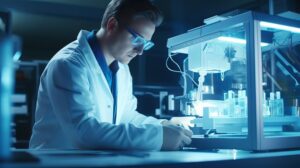
Most dentists work closely with one or more dental laboratories. There is nothing wrong with doing so. In fact, many labs have sterling reputations and produce beautiful restorations, surgical guides, and more. However, more and more dentists are choosing to reduce the importance of outside laboratories in their practice by investing in 3D printing technology, which allows them to create important items in-house. How could 3D printing revolutionize your dental care experience? This blog post explains a few ways.
Consistent Quality
3D printing uses digital scanning techniques and precise technology to create items. As long as information is correctly inputted into the machine, it produces high-quality dental appliances. This is in contrast to what you might get from a lab, where the quality of a product can depend heavily on the skill level of the technician who works on it.
Faster Workflow
A dentist who uses a 3D printer does not have to go through the process of shipping plaster molds of a patient’s mouth to a lab and then waiting for the lab to start working on the ordered items. Instead, a dentist with a 3D printer can assign his team to get to work on the needed objects much sooner, resulting in more efficient treatment for patients.
A More Comfortable Patient Experience
If you have ever gotten a manual impression taken of your teeth, you might remember an unpleasant experience. In contrast, 3D printers rely on digital dental scans. A digital impression scanner produces incredibly accurate results without the uncomfortable putty that is used for traditional impressions.
Reduced Expenses
Working with a third-party dental lab can significantly increase the cost of doing business for dentists. In order to turn a reasonable profit, those costs have to be passed along to patients. An in-house 3D printer reduces involvement with third-party laboratories, which means that a dentist can focus on providing top-quality, reasonably priced care.
Better Surgical Outcomes
Some dentists rely on freehand techniques to place dental implants in patients’ jawbones. That can be successful, but if a case has some complicating factors, it is better to use a surgical guide. A 3D printer can create accurate surgical guides to minimize the risk of human error during dental implant procedures, leading to improved overall outcomes.
3D printing is truly amazing! If your dentist has this technology, ask them how they use it to make your experience as positive as possible.
Meet the Practice
Dr. Joseph S. Spades of Northeast Arkansas Dentistry is passionate about patient care and utilizing the latest technology in his practice. He is proud to use a 3D printer to make treatments as efficient, accurate, and comfortable as possible. To learn more about Dr. Spades and how our team may be able to serve you, contact our Jonesboro office at 870-931-6323.
